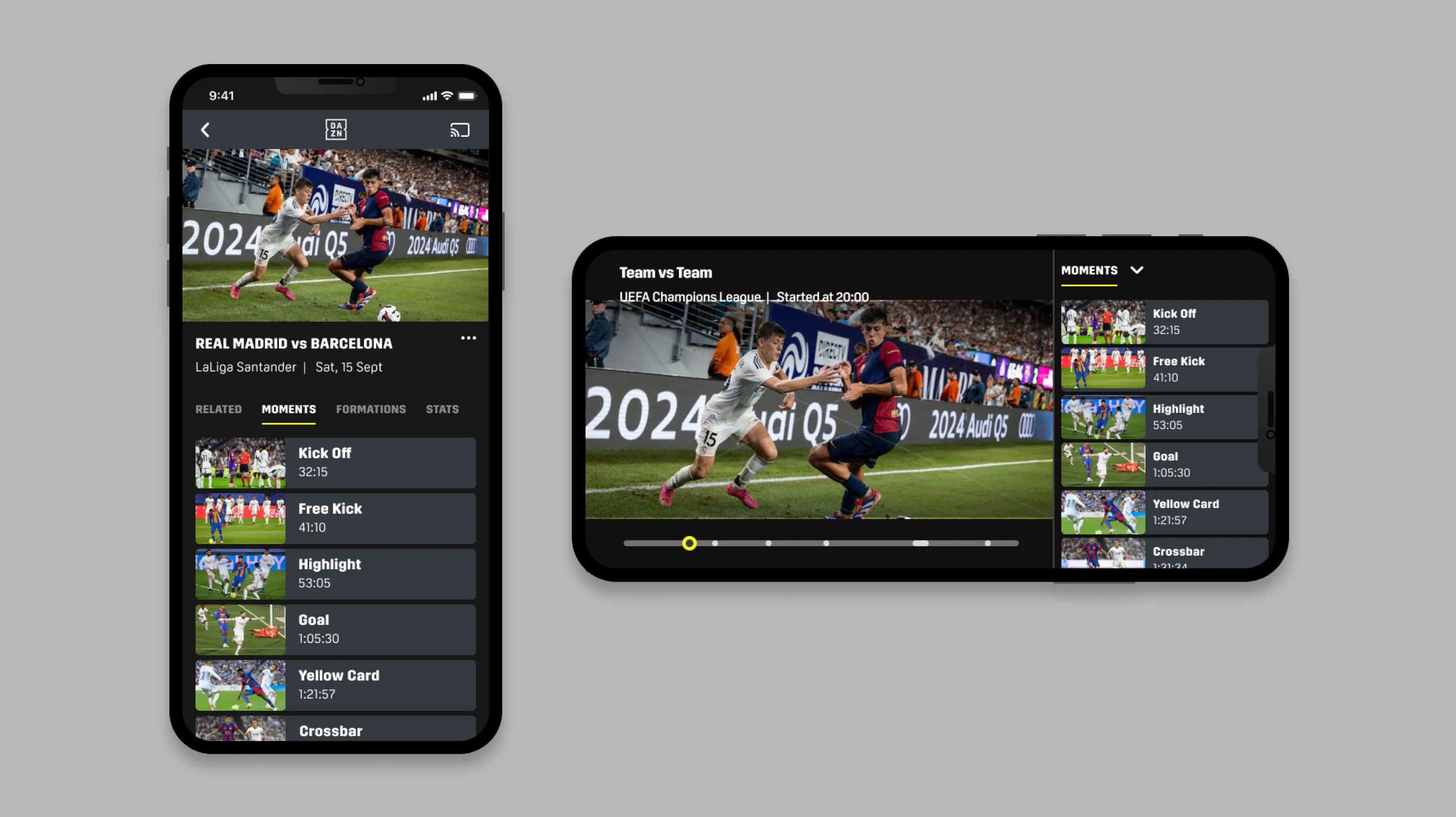

UX lead on Key Moments: Workshopping, high fidelity prototyping, wireframing, user research, edge case design
Key Moments was a feature that came out of some generative research that DAZN had conducted that showed us that users wanted new ways to browse and watch the most interesting parts of an event. We were to initially launch on web but I wanted to tackle the problem with a cross platform mindset as we knew it would later appear on TV and mobile. I ran a workshop with stakeholders across the organisation to help consolidate ideas and align the team. I then prototyped various options for reviewing, iterating and testing. I conducted user testing sessions around the office to help surface usability issues and help us refine the design. Key Moments on football events launched on desktop in 2017 and then later was adapted for other sports and territories.

UX lead on Key Moments: High fidelity prototyping, wireframing, user research, edge case design
Designing Key Moments for native mobile devices was an interesting challenge due to the small screen size and the lack of accuracy you get from using your fingers to navigate the moments. That’s why through testing and iteration I landed on a list layout that could be accessed in landscape or portrait mode and could be browsed as the video continued to play, We tested key moments on mobile with our panel of beta testers and refined the design based on feedback.

UX lead on Key Moments: User flows, usability testing, UI design, TV prototyping
Second screen sign in was a feature that needed a quick turn around due to a new business and legal requirement. From a UX perspective it was also a great opportunity to provide the customer with a valuable new feature. I worked closely with the product manager and engineering point of contact to create a flow to ensure all parties understood the requirement and were aligned on the technical design. I then created high fidelity designs for the key screens and tied them together into a prototype which we then with users offsite with a setup that simulated both the TV and mobile experience in the journey. This provided some invaluable insights that helped us to refine the design for launch.